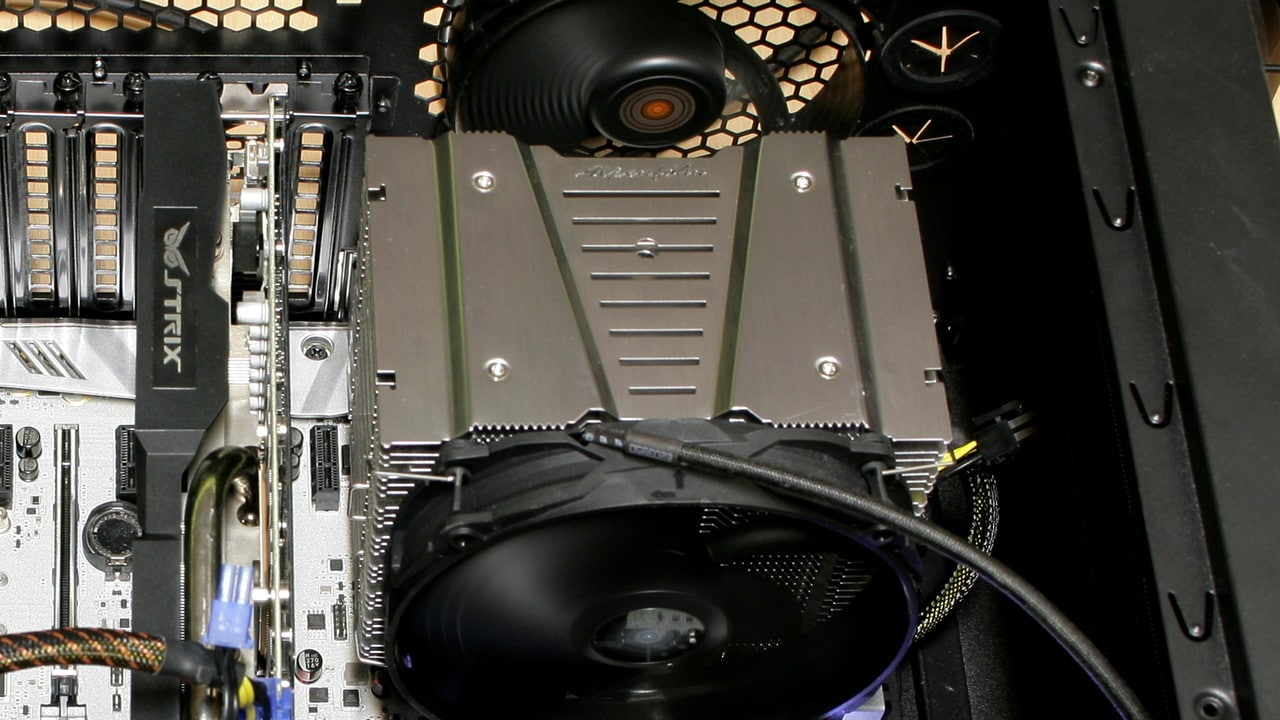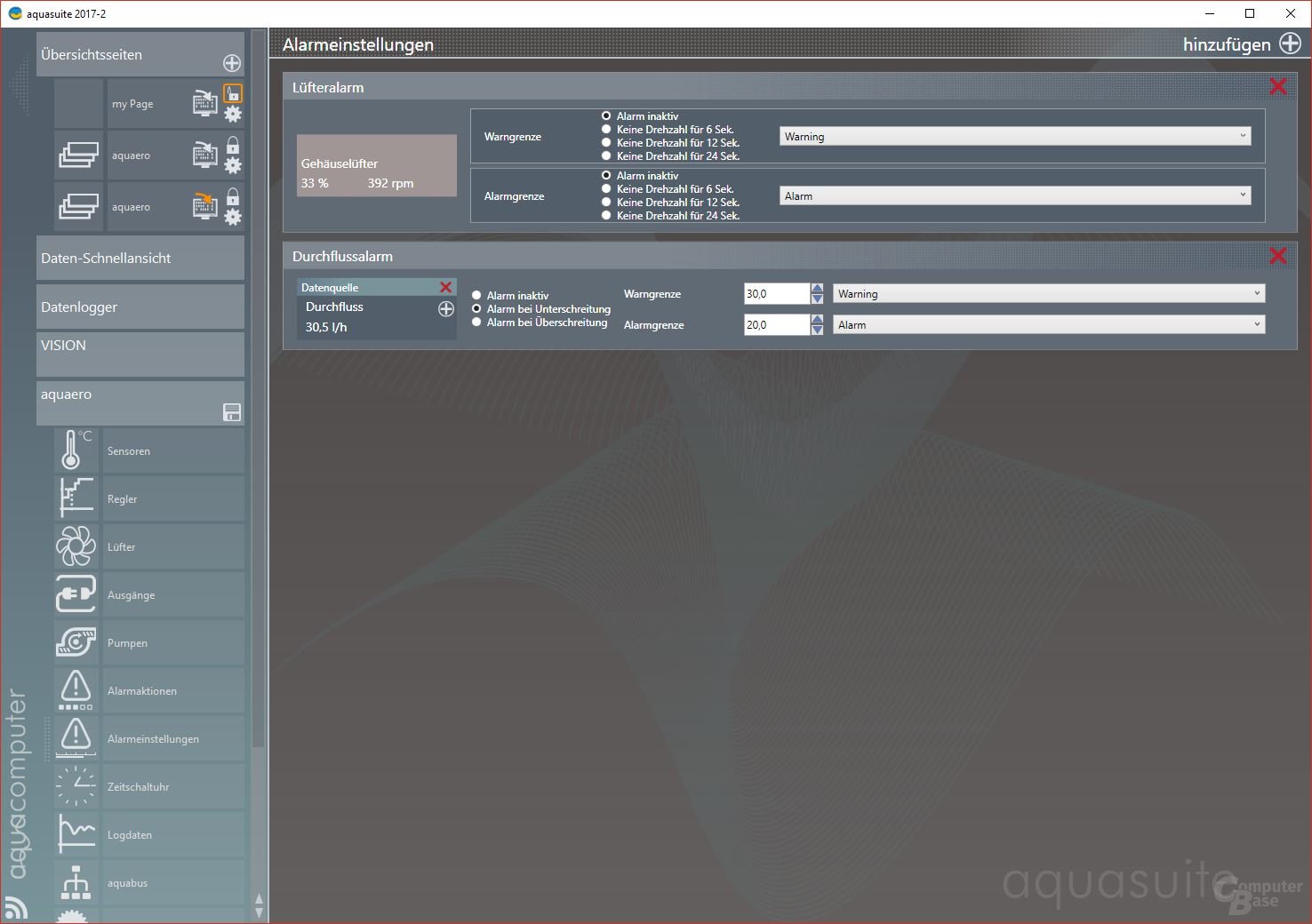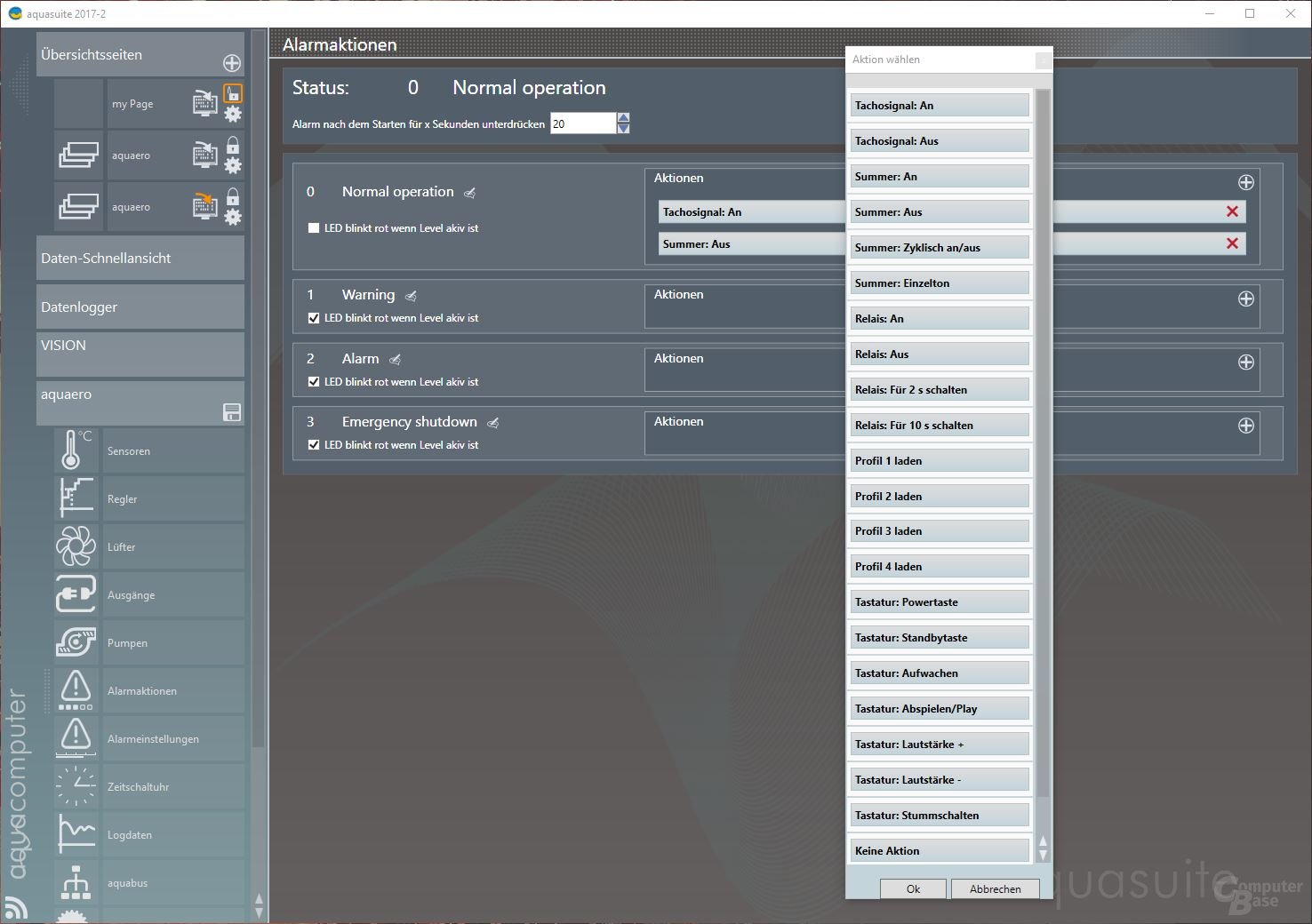– Fans provide the necessary draft in the PC. So that they operate efficiently and in accordance with the prevailing temperatures, they want to be controlled sensibly. In the test, BitcoinMinersHashrate compares the standard "adaptation via the mainboard" with the separate controls Aqua Computer Aquaero 6 LT and Corsair Commander Pro.
Fan control makes PCs quiet
Many users want a particularly quiet PC, but nowadays it is often no longer hidden under the desk, but should be presented clearly. This brings noise sources closer to the user, which is why a sensible design of the cooling is all the more important if the computer is not supposed to draw attention to itself in the end.
High quality fans are just the beginning
It is therefore obvious that fans with quiet bearings and a large speed interval should be used. However, this is only the first step to a quiet computer. If the fans are not adapted to the respective load and thus temperature situation, the PC is louder than necessary when idling and may lose performance under load. Sensible control must therefore be guaranteed.
This can be done using a modern mainboard or separately available fan controls. BitcoinMinersHashrate compares the former variant in the form of the MSI X370 XPower Gaming Titanium with the controls Aquaero 6 LT from Aqua Computer and Commander Pro from Corsair.
More or less convenient settings
Fans can be controlled via a mainboard either directly in the UEFI or via software from the manufacturer under Windows. For reasons of stability, the setting in the UEFI is preferable to the latter, because it works absolutely independently of an additional program that runs in the background of the operating system. However, the setting in the UEFI is a little more uncomfortable because the user interface is less appealing.
As separate fan controls, only solutions that can be programmed using software are used in the test. Manual controls that take place in a 5.25 "bay for optical drives are slowly but surely dying out – together with housings that offer corresponding bays. In this context, however, software programming does not necessarily mean that after the creation of fan profiles software must run if the settings are saved in the hardware of the controls.
The test candidates in comparison
Before the individual controls are presented in detail, there follows a short tabular comparison of the two fan controls and (if appropriate) the mainboard, which serves as an exemplary on-board fan control.
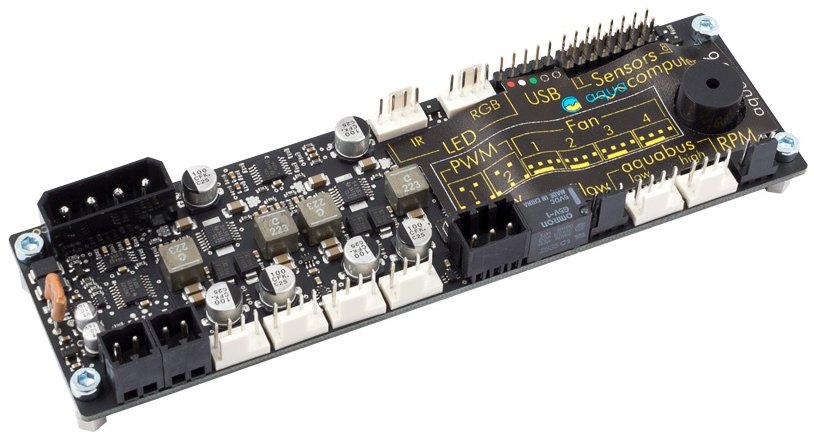
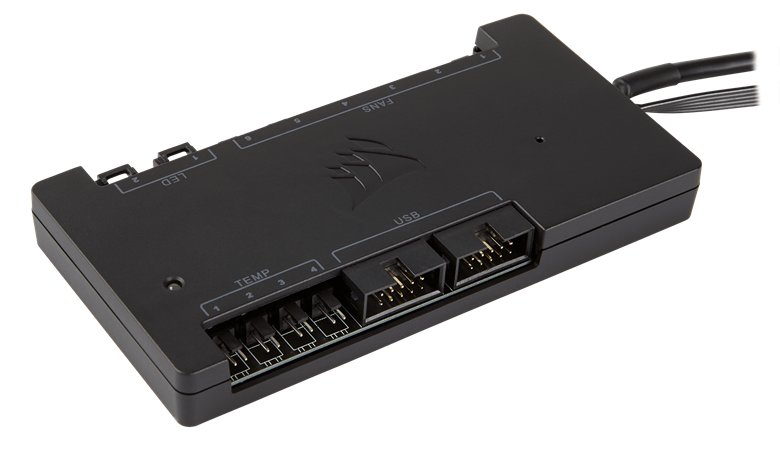
The overview already shows that the different controls address other target groups: The Aquaero from Aqua Computer aims for use in water cooling with a flow sensor input, particularly strong fan ducts and up to eight temperature sensors. In addition to controlling fans, Corsair also offers buyers the option of controlling RGB LED strips with the Commander Pro. The mainboard, however, remains with the basic functions of a fan control, but does not cost any extra because the main board is needed for a PC anyway.
Aqua Computer Aquaero 6 LT
Calling an Aquaero a mere fan control can be seen as an understatement. Because strictly speaking, Aqua Computer with the Aquaero controls does not aim at simple air cooling, but rather designs the boards as a command center for water cooling. In addition to the LT version, which serves as a test sample, the Aquaero can also be purchased in a Pro and XT version, which come with a display (Pro, XT) and an IR remote control (only XT).
In the latest revision (Aquaero 6), four channels are available for fans, which can be controlled both by voltage and by means of pulse width modulation (PWM). Up to 2.5 A (30 watts at 12 volts) can be called up on each channel. With the optionally available passive cooler, the permitted current strength increases to 3 A per channel. Theoretically, the board can provide up to 144 watts on all channels – but that much shouldn't be required from the Molex power connector, through which the Aquaero draws its energy, out of consideration for contacts and the power supply.
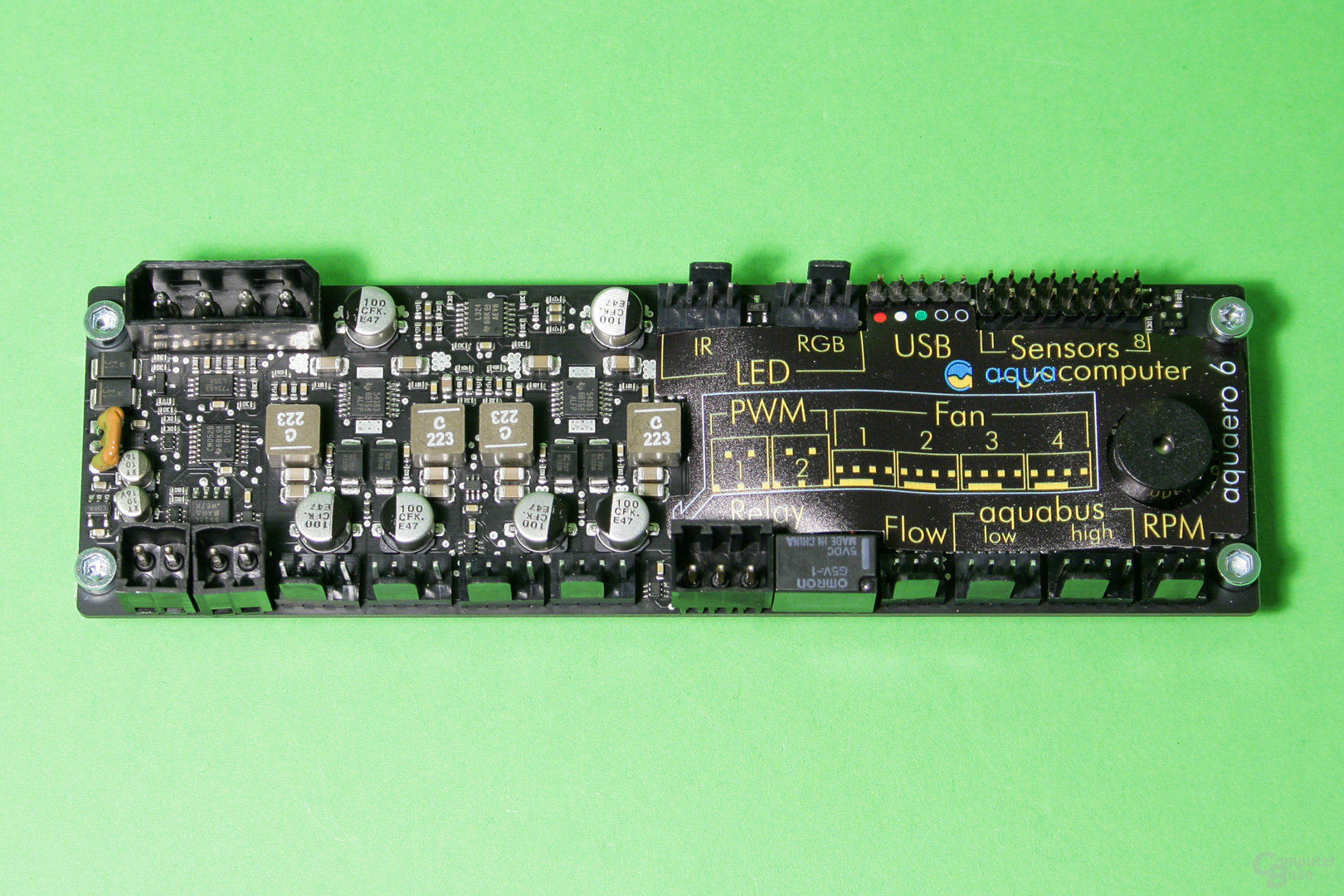
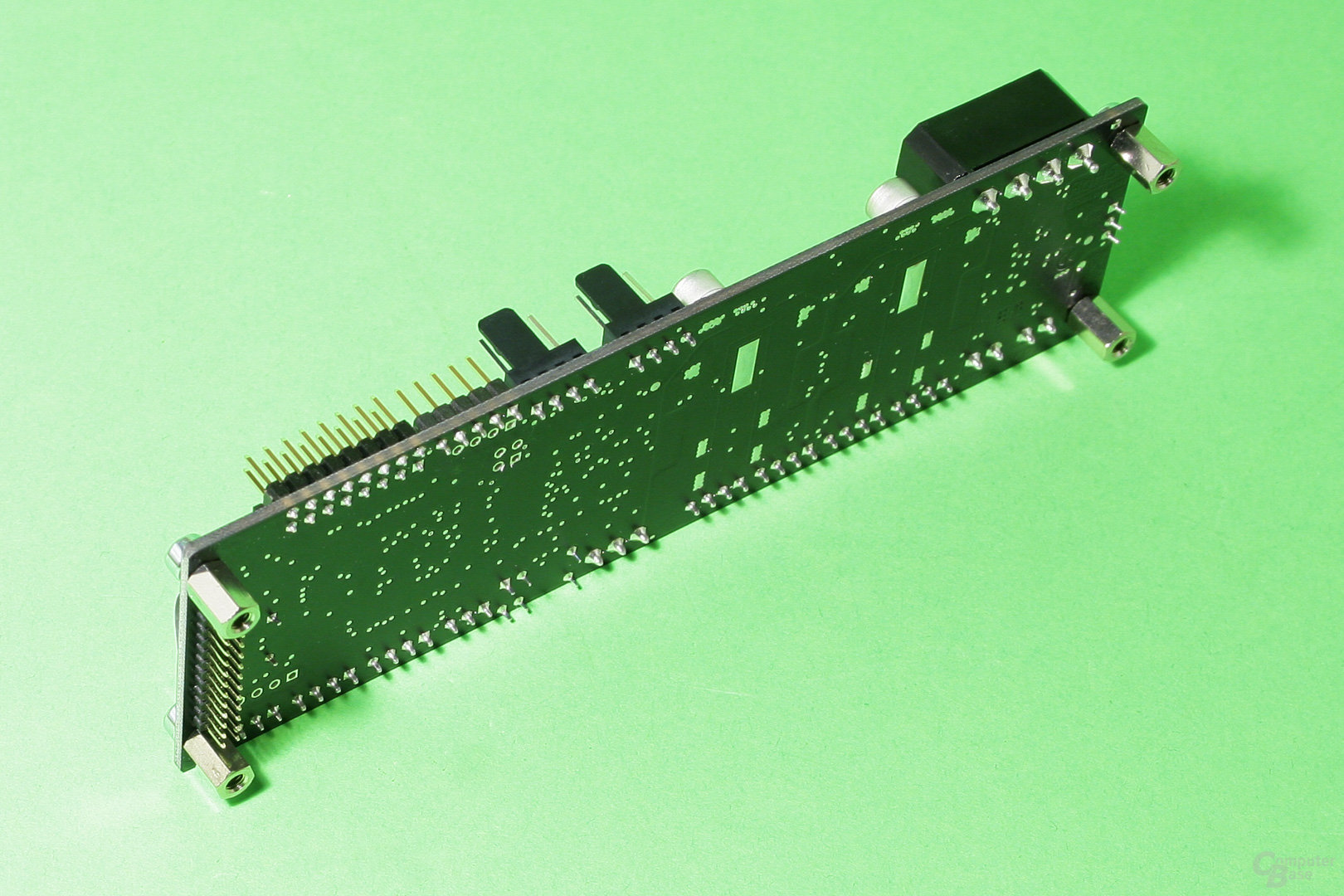
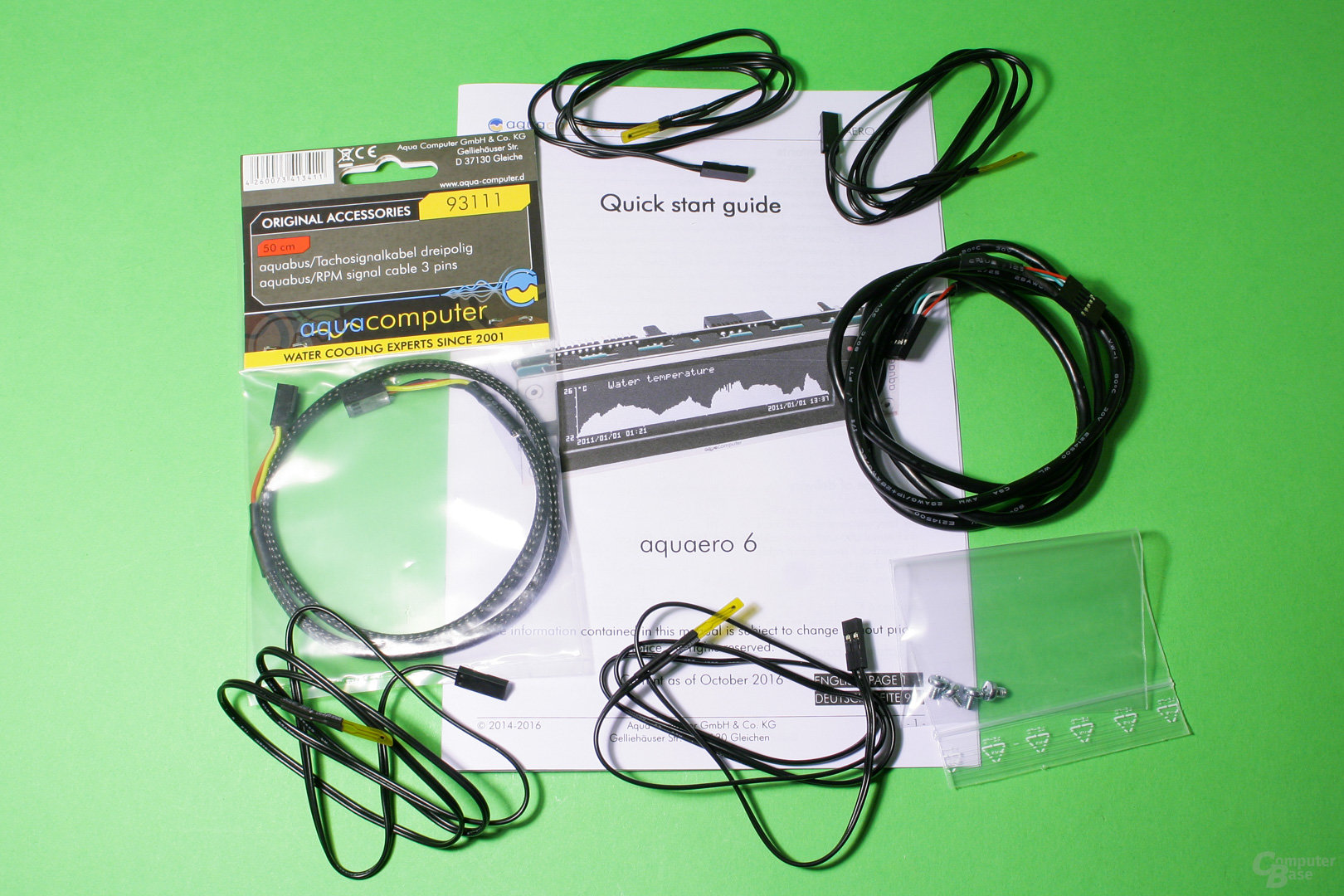
The Aquaero 6 LT has the right format to be accommodated in a 5.25 "slot, but can also be placed anywhere else in the housing using the four screws included in the scope of delivery. In addition to the four fan connections, the control system also has a variety of other connection options, including up to eight temperature sensors (four included), a flow sensor and an RGB LED, as well as a proprietary Aquabus interface as well as programmable relay and PWM connections. Power is supplied via a Molex connector, and the controller connects to the PC via an internal USB 2.0 data cable.
Comprehensive software
The in-house software Aquasuite from Aqua Computer is used to set the Aquaero. This is straightforward: After installation, the Aquaero is recognized without any problems, and a firmware update also runs smoothly. However, the Aquasuite has to be blamed for a flaw: The tool offers a variety of setting options, which can easily overwhelm a newcomer – and Aqua Computer has so far failed to provide complete documentation of the Aquasuite.
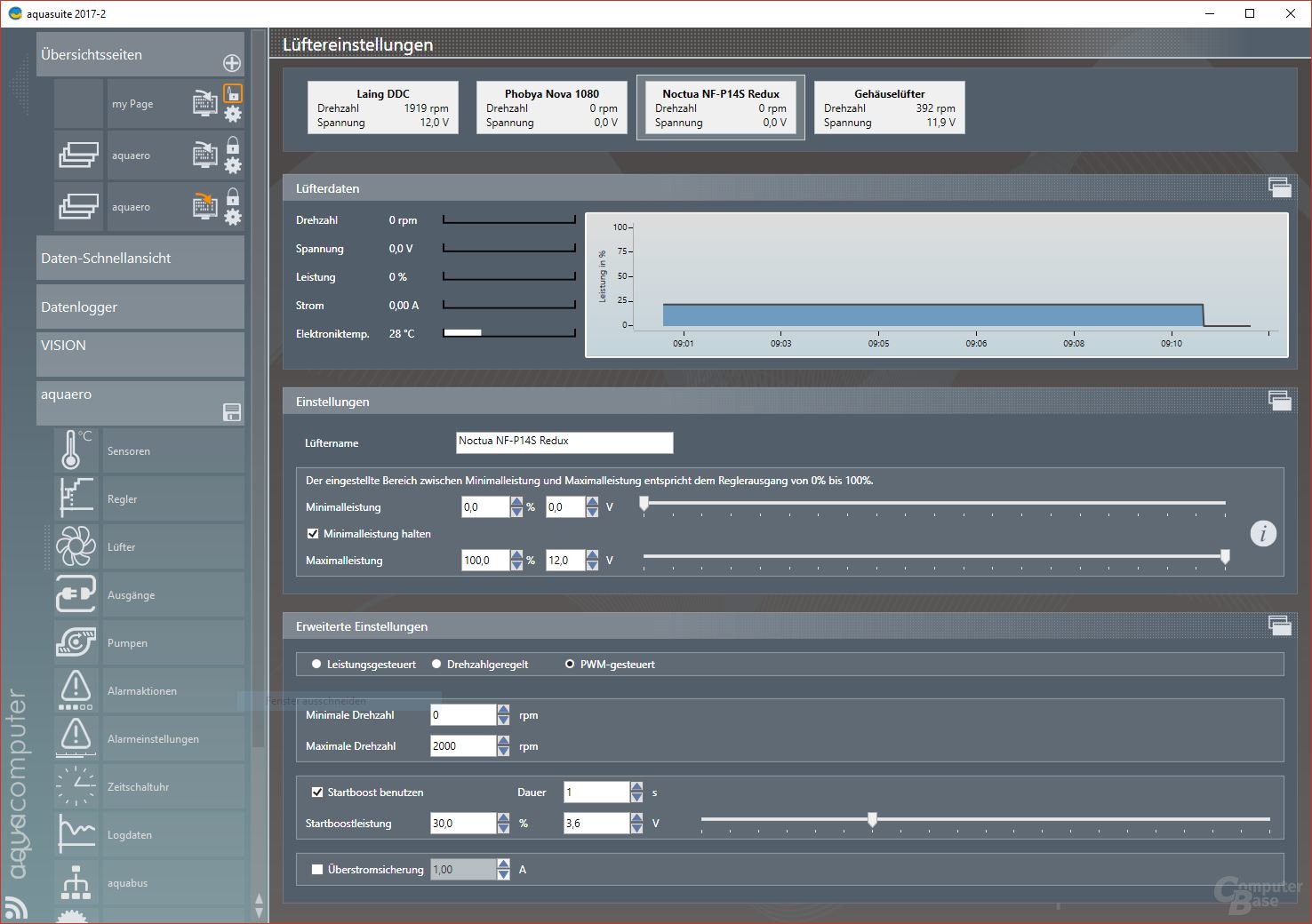
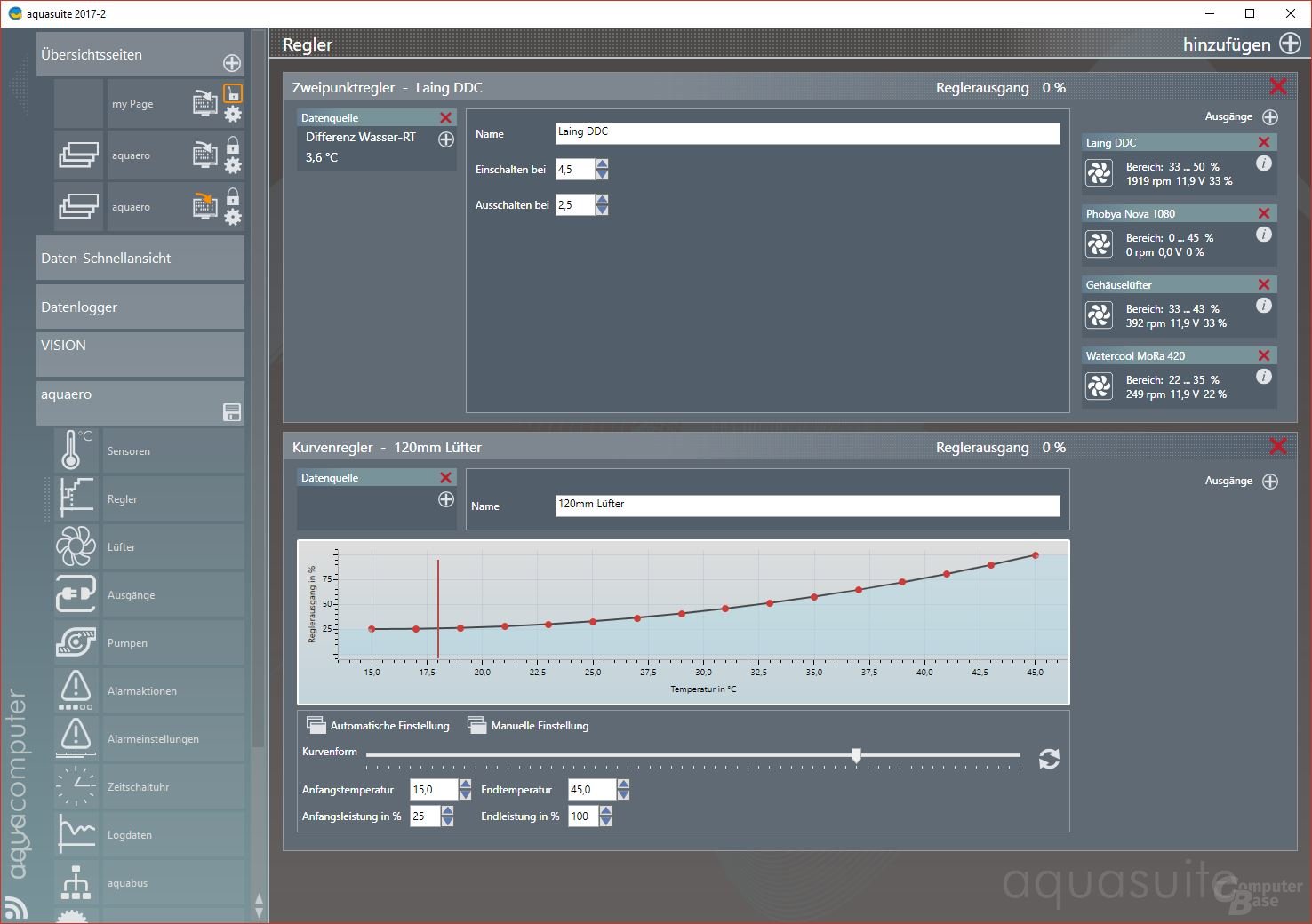
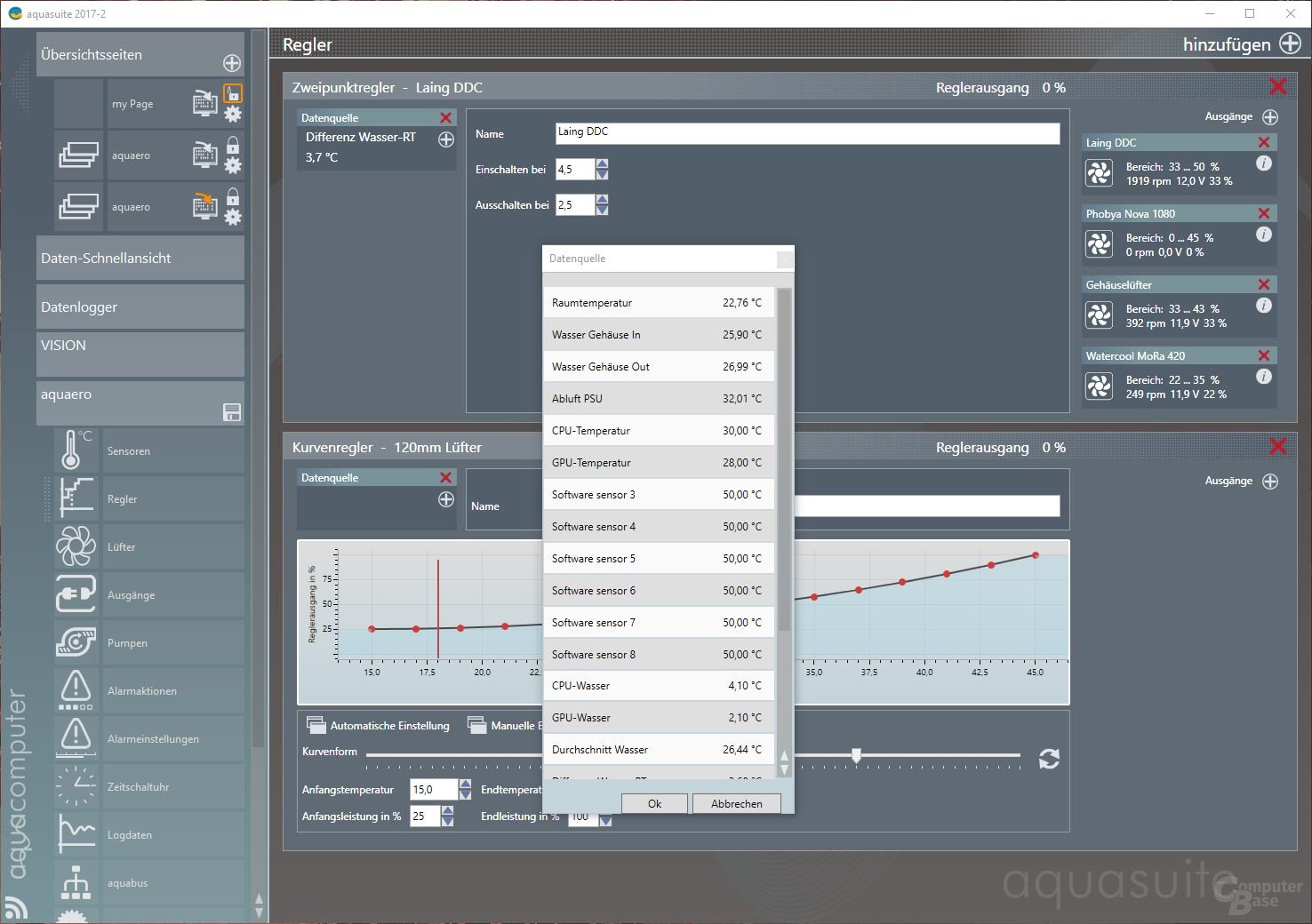
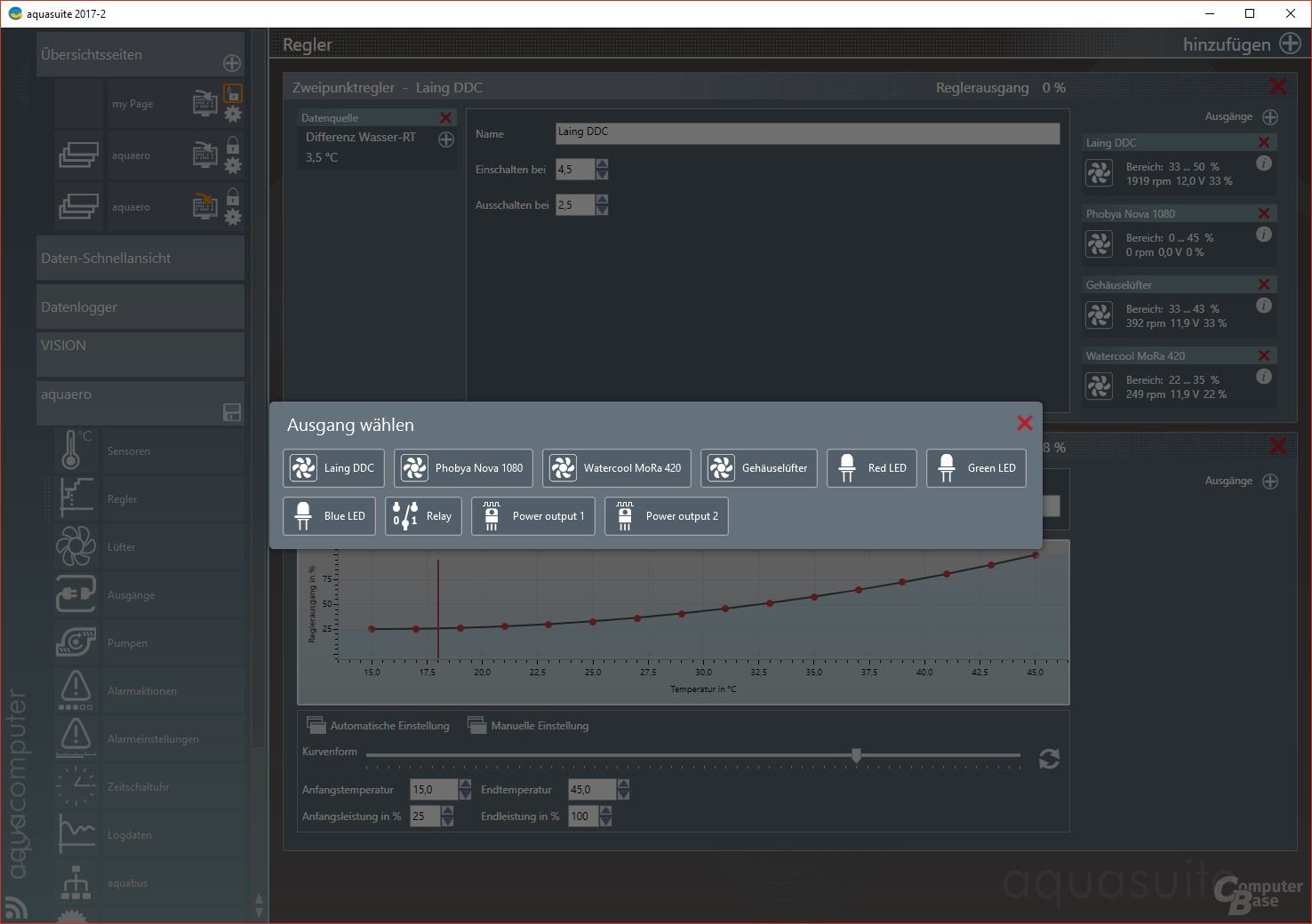
The Aquaero not only shows the speed of a connected fan, but also the current current and the temperature of the control electronics. According to the documentation, all fan connections are short-circuit proof and are automatically switched off when the current flows above 3 A and when the electronics overheat to protect the circuit board. The power of the outputs is sufficient to supply and throttle not only several fans, but also powerful pumps in a water cooling system using the Aquaero.
The control of the outputs is more extensive than that of the competition: In addition to simple default values and curve controllers, the Aquaero also masters setpoint and two-point controllers. The start boost of a fan output can also be freely defined, which can be a boon especially when there are a large number of connected fans when the PC is started, for example if a dozen 140 mm fans do not start at maximum speed, but throttled the same way.
Software temperature sensors and alarm settings
Thanks to the USB connection, the Aquaero can read data from the CPU, GPU and mainboard. The HWiNFO monitoring tool (download) is supported by Aquasuite as a data source, which is why a number of sensor data can be selected. In addition to the temperature sensors connected directly to the Aquaero, the controller can also regulate the fans according to the temperature of the graphics card or the processor.
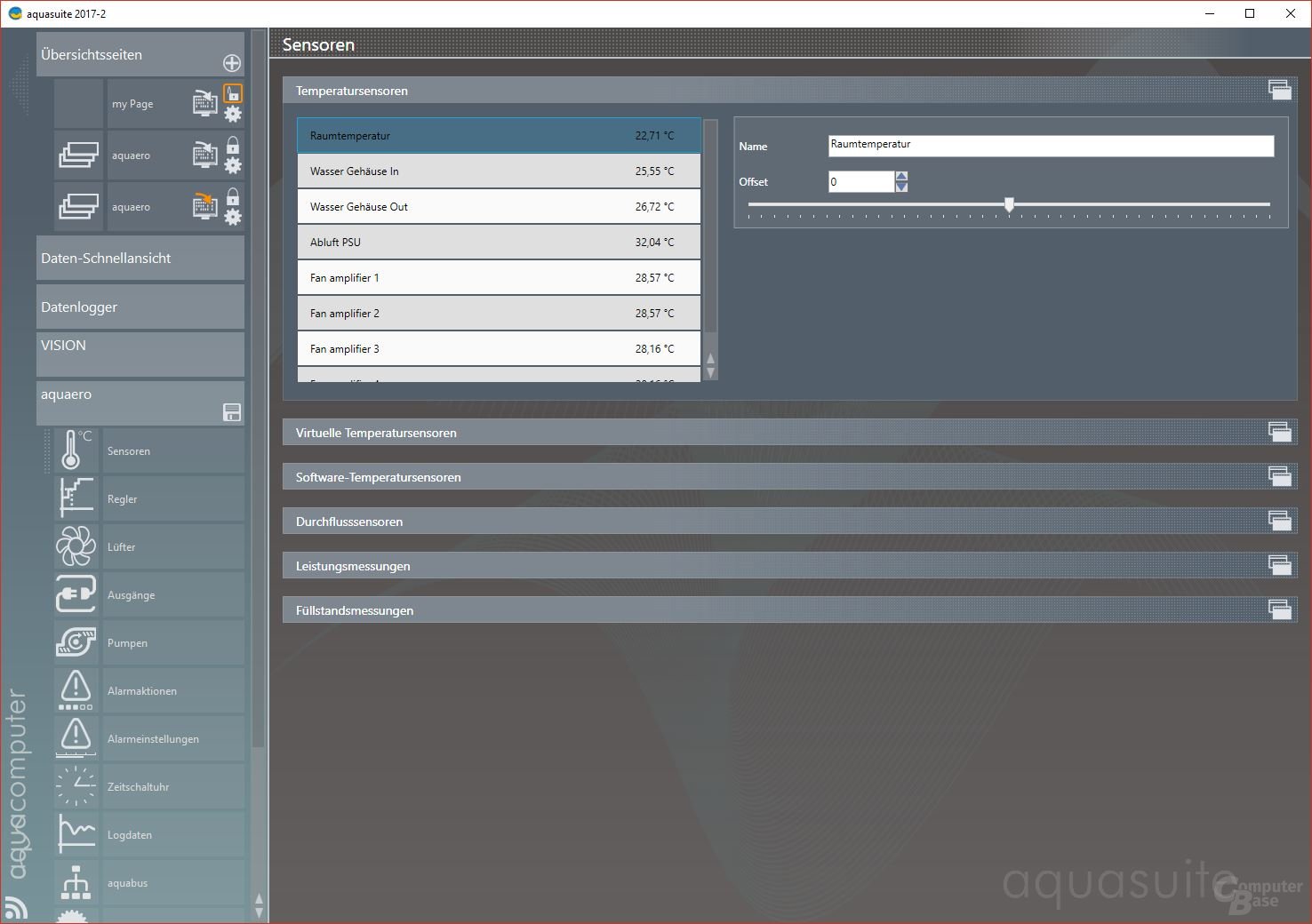
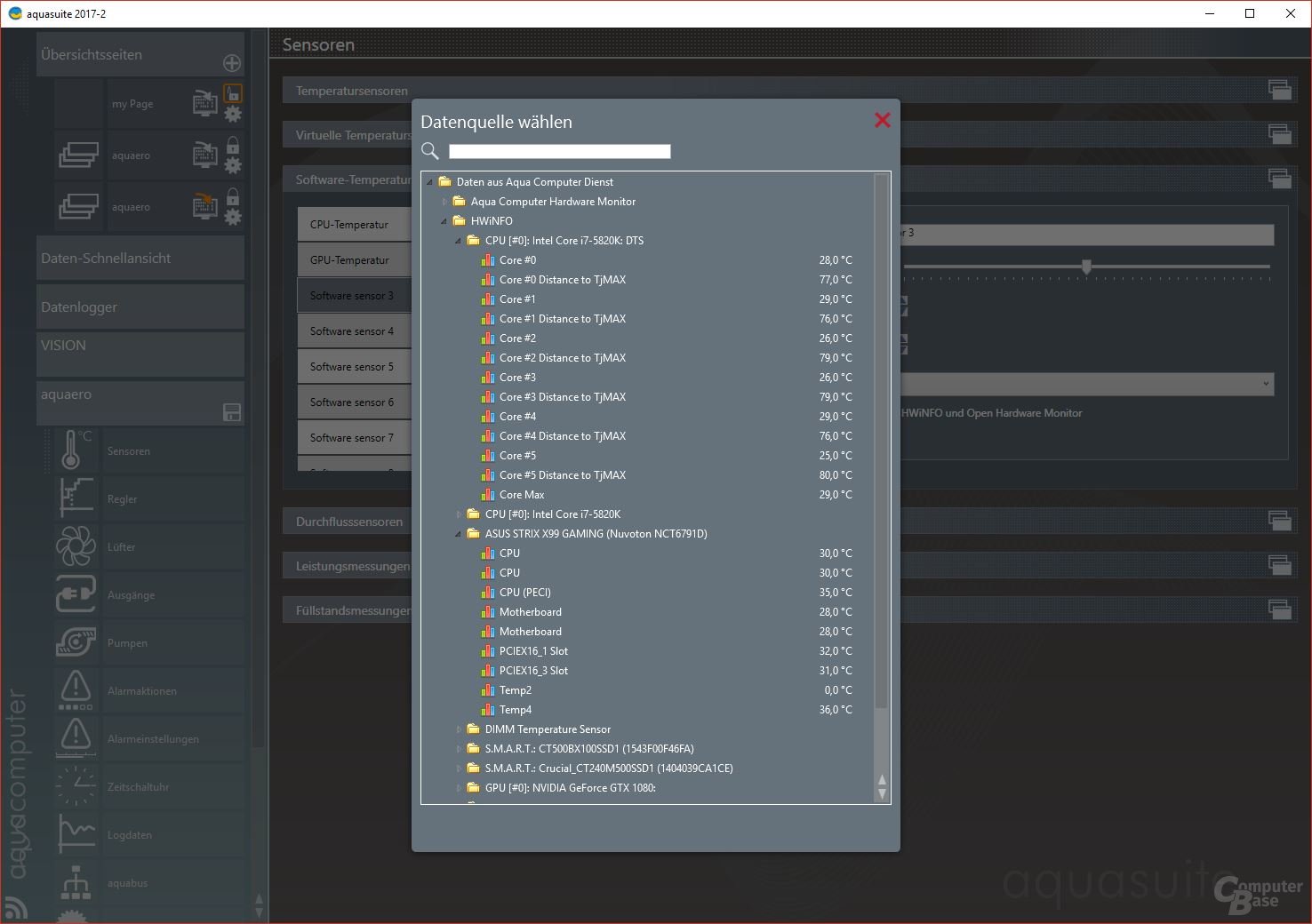
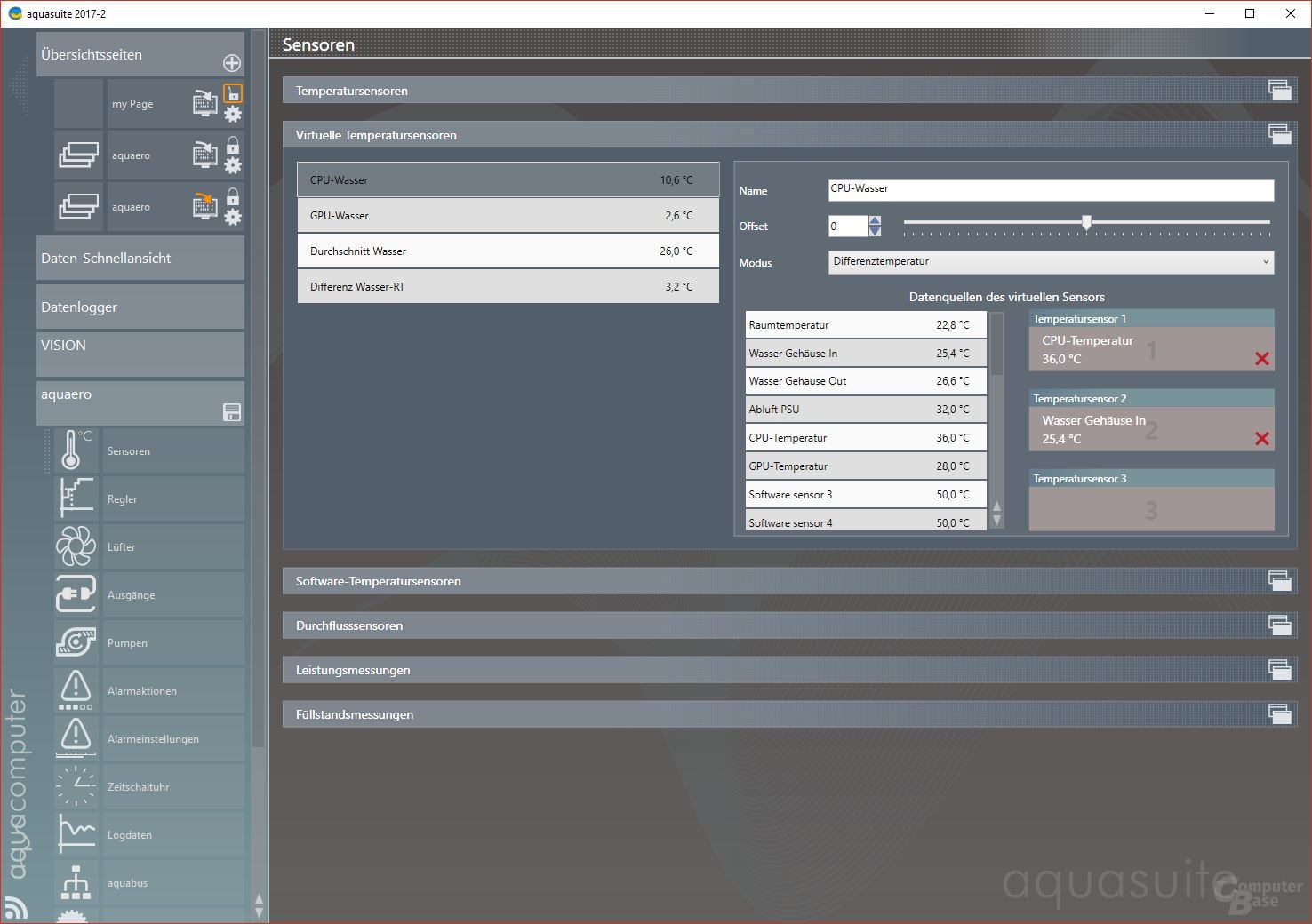
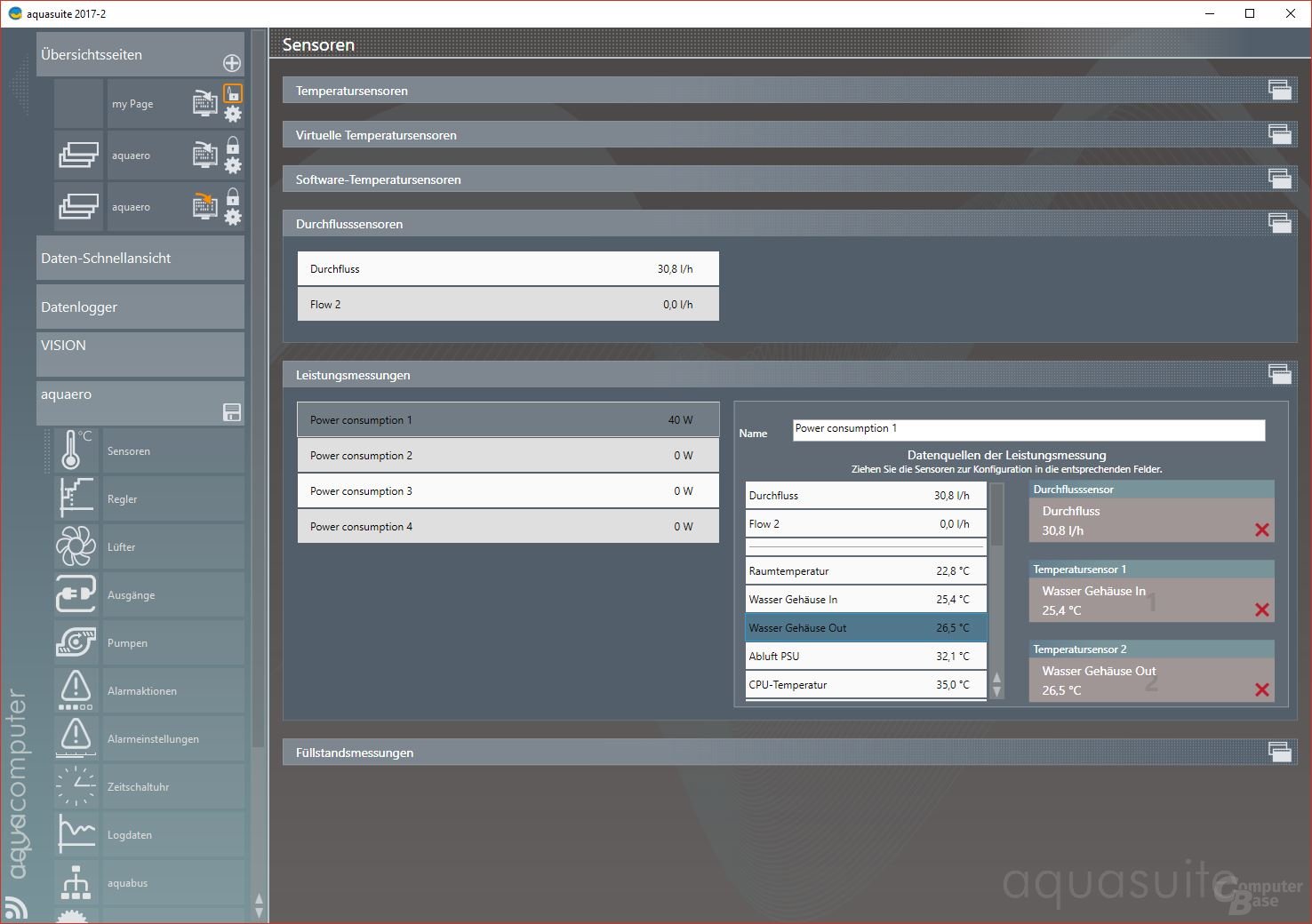
If that's not enough data sources for you, you can use virtual temperature sensors to calculate temperature differences or average values from any sensors and use them as a source for control. This is particularly useful in a water cooling system if, for example, fan curves are to be set based on the temperature difference between water and room temperature. As a further gimmick in a water cooling system, a performance measurement can be carried out using the current flow value and two temperature sensors – albeit with limited accuracy.
In the event of a fan or pump failure, the user again has a multitude of options. For example, the controller can be used to switch off the PC in an emergency or the speedometer signal, which the controller can output for a mainboard fan connection, can be switched off – in this case, the mainboard could carry out further actions. The Aquaero can also emit an acoustic alarm and, by networking with other profiles, set the remaining fans to 100% output, for example, or activate a second pump in a system with redundant water cooling.
additional options
In addition to the basic functions of a fan controller, an Aquaero offers additional control options through its programmable additional outputs, which are only relevant for ambitious users. Of the other options, only two should be mentioned here: the on-screen display and the Internet interface.
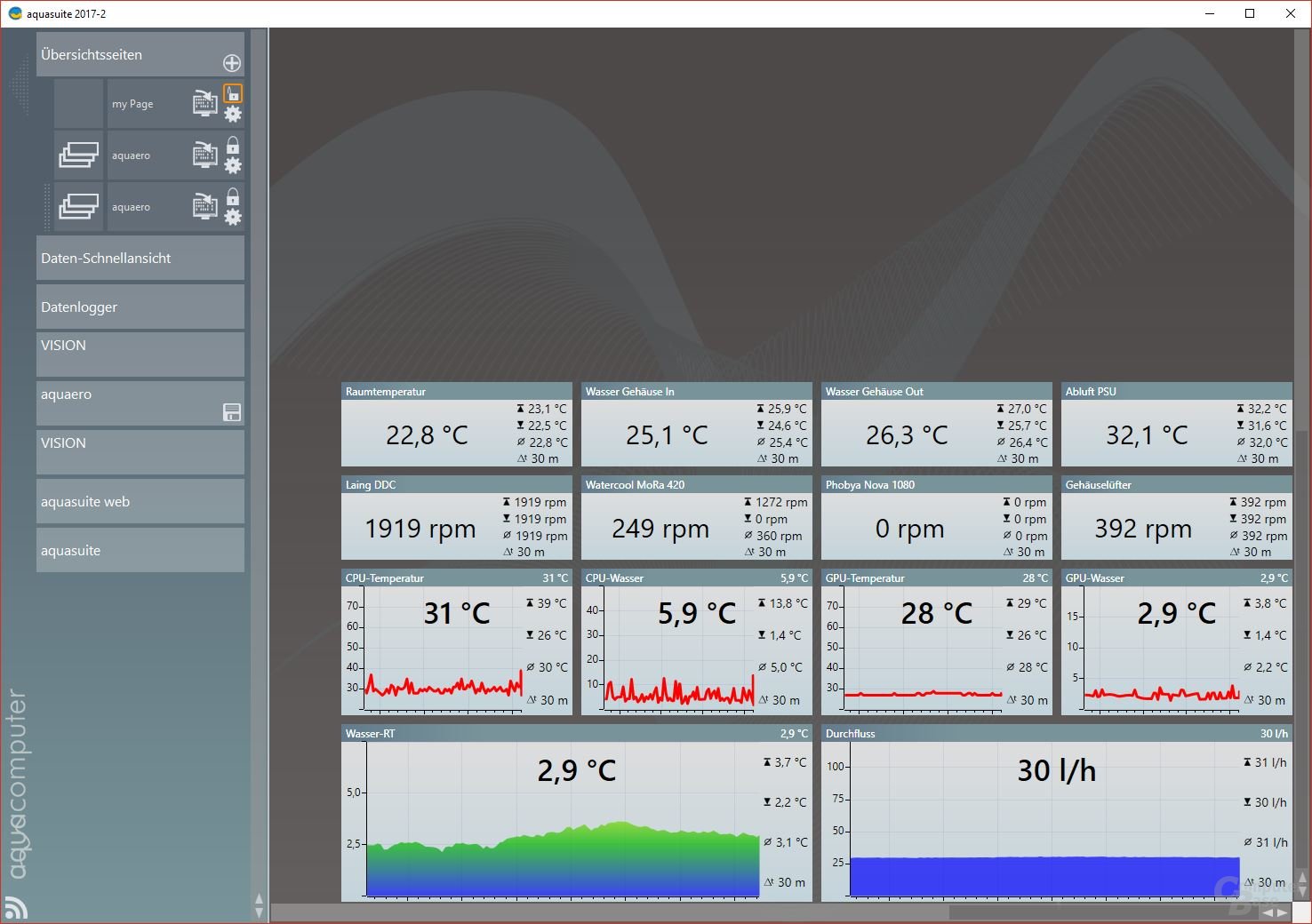
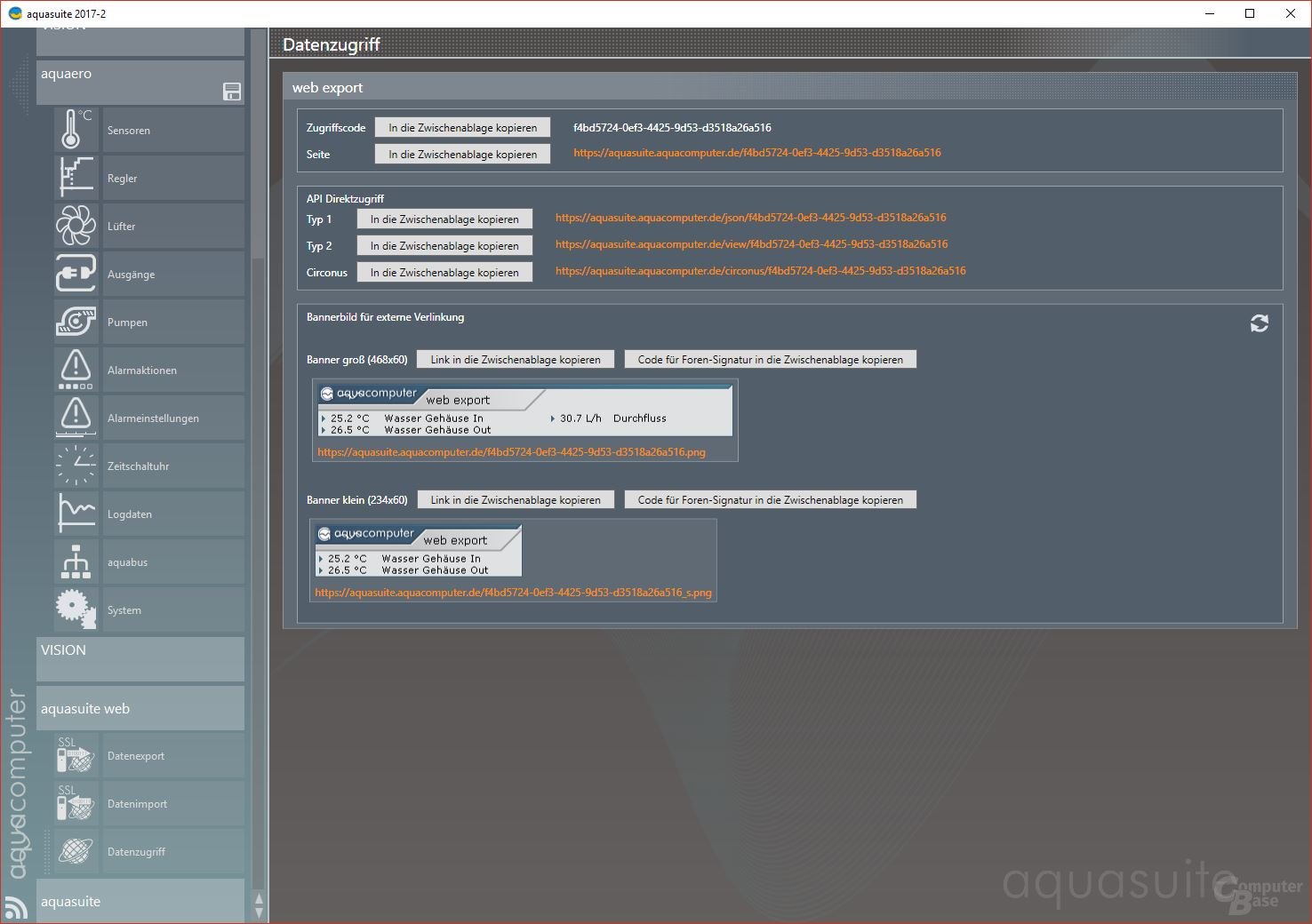
The system monitoring can be brought individually to the Windows desktop using the Aquasuite software. The on-screen display not only allows the display of fan speeds and temperatures, but also the reading of the various software sensor data such as the clock frequencies of the CPU and GPU. Internet access to the Aquaero can be established using "aquasuite web" so that monitoring data can also be read off the PC. The software also enables the creation of banners, which are integrated, for example, in a forum signature and fed with current data from PC cooling.
On the next page: Corsair Commander Pro




